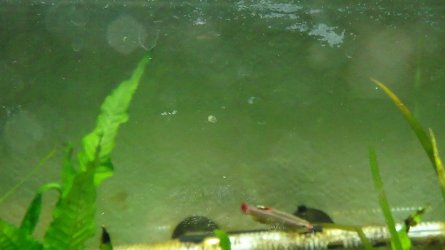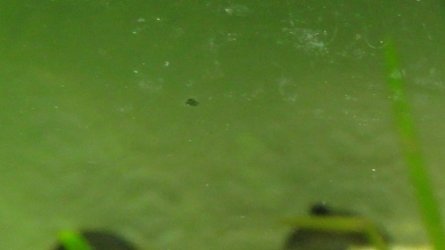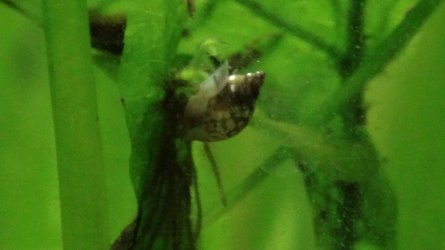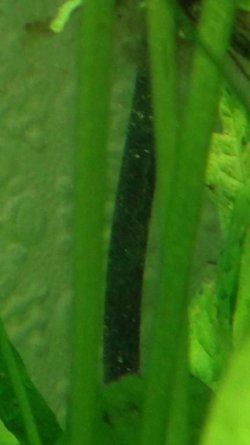I conducted some water tests today with my new kits, and it's the first time in almost 4 weeks I've tested with anything except the TDS metre. I did it under daylight conditions, although whether they were optimum or just okay is something else entirely. Using the Nutrafin tests, nitrites look 0ppm as best I can tell, and ammonia is still giving me that low reading. The pH is between 7.0-7.5 as best I can tell.
Nitrates I'd say 20-50ppm, I have a little difficulty reading it. Holding flat against the booklet it's a deep violet, so I hold it away from the booklet and it matches somewhere along the colour chart more closely. I don't think it'd be towards 110ppm or above that. Or at least, I hope not...
I'm not sure exactly what the Nutrafin ammonia reading is, it's most noticeable that I do have a reading when I hold the test tube flat against the booklet (so it might be that, while I have a slight reading, it magnifies it - there is a great deal of shadow involved, and possibly light reflecting back through the test tube, but it maybe not the cause of what I'm seeing, or I might just be making things up). It is harder to see the reading when holding the test tube away from the booklet, it does look closer to 0ppm if there is a reading. But, it could be anywhere from 0ppm to 0.3ppm - or maybe more, even somewhere up to 0.6ppm (although I don't think it is, it did look clear enough) - based on how the colour should change on the Nutrafin ammonia test for the 0ppm to 0.6ppm range. API ammonia is quite difficult to make out, it could be 0ppm, it could be 0.125ppm, it could even be 0.25ppm - that one all depends on how I'm looking at it and my interpretation (it's possibly my least favourite test to interpret).
I never fill exactly 5ml, but to the 5ml line. The pipettes I use are somewhat unpredictable; sometimes I can get a perfect 2.5ml into them, other times it might be a little above or below. Squeezing a little bit of the water out to lower the measurement might cause air bubbles to affect it, so then I have difficulty telling precisely what I have in the pipette. Sometimes the water starts right at the tip of the pipette, others a little way up towards the 0.5ml line. The only real way I could probably get 5ml into a test tube is to use a syringe, probably with some clever but complicated idea of mine on how to get the water from the tank into the syringe without getting my hands in the tank, etc.
I did do some of the testing when the living room was being polished, and also shortly afterwards, so I had the lid of the tank up to take water samples. I also left the the pipette on the side by the tank and re-used it in the tank water when doing other tests and refilling the test tubes after washing them out in some tank water prior to testing - I always fill the test tubes with some tank water and shake them up prior to filling them with the actual test samples, as I don't always dry them after swilling them with tap water after completing previous tests. I hope I didn't put anything into the tank that way.
As for my water change today and the algae, I used the magnetic algae scraper to remove the algae about an hour and a half before I conducted the water change. As it had built up quite a bit, I also cleaned some of the gunk (Algae? Diatoms? Some sort of mulm? Not sure) from the heater cradle that attaches to the glass and holds the heater, not sure if I got much of it up when I siphoned the gravel lightly - I can't remember if that was before or after removing the first 7-8 litres, after which I proceeded to remove another 9 or so lites, but some of that 9 litres was with the water jug and not siphoning the gravel (so not as effective at removing detritus).
I cleaned the glass on the back of the tank also as regards the algae, but that was at the mid-point too (can't exactly remember, but I might be right). I just hope I didn't leave too much in the tank to decay and pollute the water. I kicked up mess when pruning and replanting some of the plants, and only got some of that in the final 9 litres. At least I think I did about 16-17 litres, or thereabouts.









